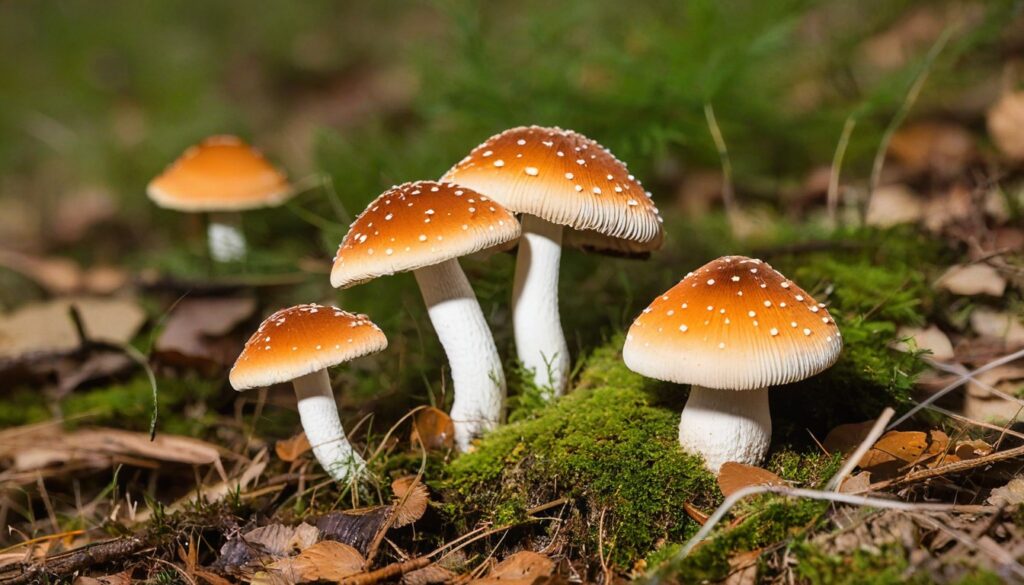Welcome to our comprehensive guide to the common mushrooms found in Virginia. Whether you’re an avid forager or just interested in learning more about the local fungi, we’ve got you covered. Virginia is blessed with a diverse array of mushrooms, from edible to poisonous, medicinal to rare. Our guide will help you identify and understand the mushrooms you’ll encounter and provide some fascinating background and insight into their nature. Join us as we explore the wondrous world of Virginia mushrooms.
Key Takeaways
- Learn to identify the different types of mushrooms found in Virginia
- Understand the ecological role of mushrooms in Virginia’s ecosystems
- Discover the edible and medicinal uses of Virginia mushrooms
- Learn to cultivate mushrooms at home in Virginia
- Explore the rare and endangered mushroom species found in Virginia
Introduction to Mushrooms
From their unique shapes and colors to their ecological importance, mushrooms are a fascinating group of fungi worth studying. With over 14,000 species found in North America alone, mushrooms come in a variety of shapes and sizes. They range from tiny, microscopic species to large, fruiting bodies that can grow up to several feet tall.
Although mushrooms are often overlooked, they play a critical role in the ecosystem. They can break down dead plant material and recycle nutrients, making them important decomposers. Some species also form symbiotic relationships with plants, helping them absorb water and nutrients from the soil.
Moreover, mushrooms have a longstanding history of use in different cultures across the world, from culinary to medicinal purposes. With their unique flavor, mushrooms have become a staple in many cuisines, including eastern and western cultures. And medicinal mushrooms, long used in various traditional medicines, are now gaining recognition for their potential health benefits and are being studied for their healing properties.
Why study mushrooms?
With their stunning beauty and ecological significance, mushrooms offer a vast ocean of knowledge and discovery. Their unique properties, ranging from taste and texture to medicinal and healing powers, are worth exploring and understanding. The more we learn about different mushroom species, their ecological roles, and therapeutic potential, the more we can appreciate and protect these amazing fungi.
Mushroom Anatomy and Identification
Before we dive into the different types of mushrooms found in Virginia, it’s important to understand the basic anatomy of these fascinating fungi.
The Parts of a Mushroom
Mushrooms can be divided into three primary sections:
- Cap: The cap is the rounded top of the mushroom and is often the most distinctive feature used for identification.
- Stem: The stem runs from the cap to the base and can vary in length and thickness depending on the species.
- Gills: The gills are located on the underside of the cap and are responsible for producing and dispersing spores.
Identification Techniques
When it comes to identifying mushrooms, it’s important to look at a variety of features, including:
|
Feature |
Description |
|---|---|
|
Cap |
Shape, texture, and color of the cap |
|
Gills |
Color, shape, and attachment of gills to the cap |
|
Stem |
Length, thickness, and color of the stem |
|
Spores |
Color, shape, and size of spores produced by the gills |
Identifying mushrooms can be tricky and requires a combination of observation and knowledge. Some mushrooms can be easily confused with poisonous species, so it’s important to be cautious and always double-check your identification.
In Virginia, there are several resources available for mushroom identification, including field guides and online forums. Additionally, it’s always helpful to consult with experienced foragers and mycologists.
Edible Mushrooms in Virginia
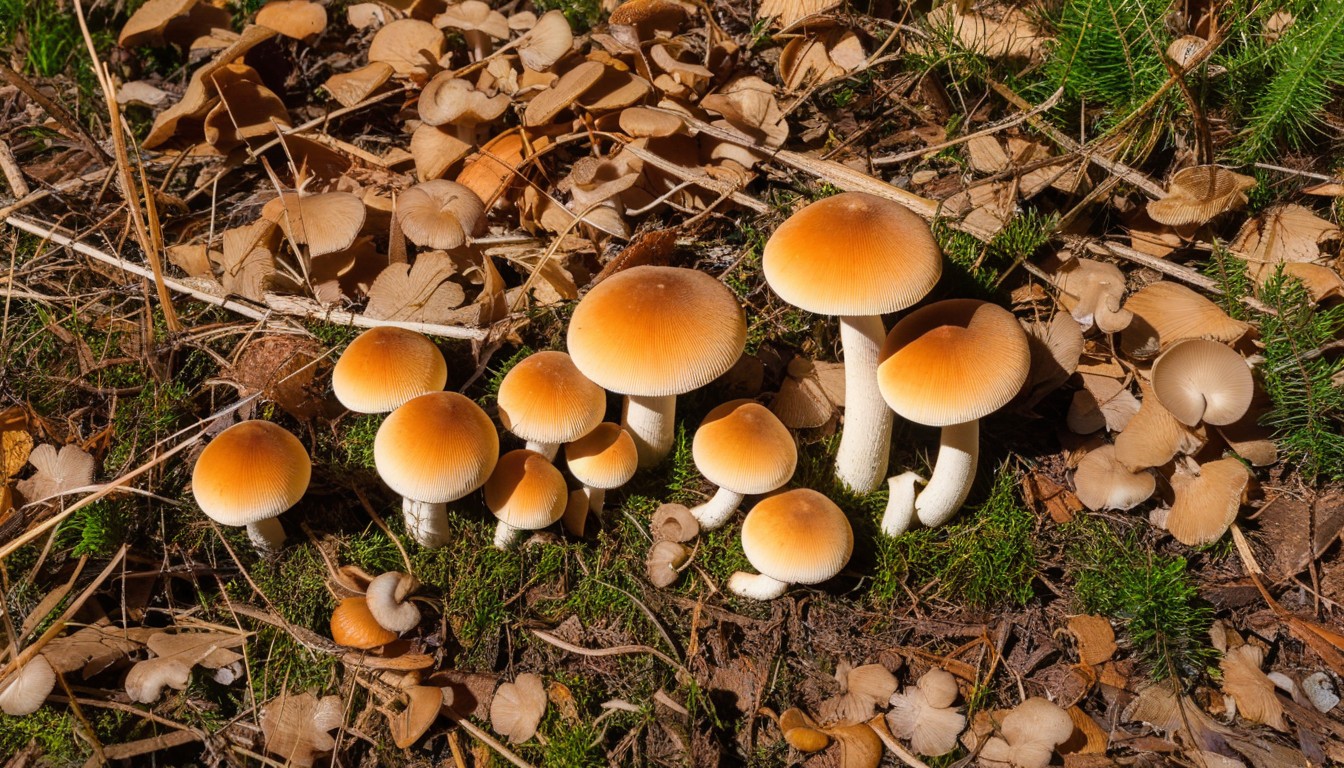
If you’re curious about the world of edible mushrooms, Virginia is a great place to start your exploration. The state is home to many species of edible mushrooms that can be safely foraged and enjoyed in various culinary dishes.
The Most Common Edible Mushrooms Found in Virginia
|
Name of Mushroom |
Identification Features |
Where to Find |
Tips for Preparation |
|---|---|---|---|
|
Morel |
Distinct honeycomb-like cap and hollow stem |
Forested areas, riverbanks, and floodplains |
Sautéed with garlic and butter, or breaded and fried |
|
Chanterelle |
Trumpet-shaped with wavy caps and gills that run down stem |
Moist, wooded areas with deciduous trees |
Sautéed with cream or wine, or used in risotto or quiche |
|
Oyster Mushroom |
Shell-shaped with soft, velvety caps and white gills |
Growing on decaying logs and stumps |
Sautéed with soy sauce and ginger, or grilled on skewers |
|
Black Trumpet |
Trumpet-shaped with thin, delicate flesh and black exterior |
Forested areas with deciduous trees and moist soil |
Dried and rehydrated for soups and stews, or used in sauces |
Remember to always double-check the identification of any mushrooms you plan to consume, and only consume mushrooms that you are 100% certain are safe to eat.
Tips for Mushroom Foraging in Virginia
- Get permission before foraging on private property
- Wear appropriate clothing and bring a basket or bag for collecting mushrooms
- Use a good field guide or consult with an expert to properly identify mushrooms
- Only collect a small percentage of mushrooms in any given area to preserve the ecosystem and leave some for other foragers and wildlife
With a little patience, practice, and knowledge, you can safely forage for a variety of delicious edible mushrooms in Virginia.
Poisonous Mushrooms in Virginia
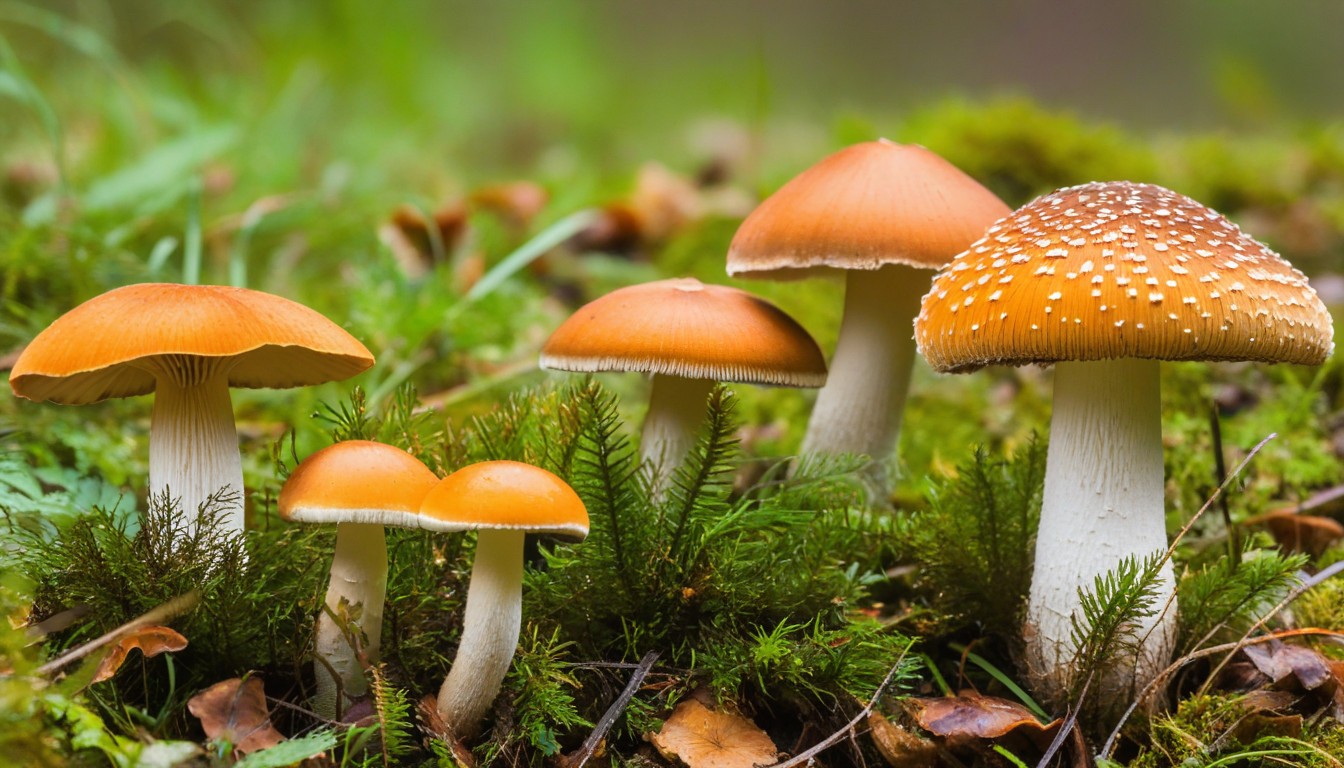
While exploring the rich world of mushrooms in Virginia is an exciting adventure, it is essential to be able to differentiate between edible and poisonous varieties. In this section, we will highlight the most common poisonous mushrooms you may encounter in the state.
Firstly, the Death Cap mushroom (Amanita phalloides) and the Destroying Angel mushroom (Amanita bisporigera) are two of the most dangerous and potentially deadly toxic mushrooms you should be aware of. Both can appear during autumn and grow near trees, and they can be easily mistaken for edible species. It’s critical to be able to identify the distinguishing features of these dangerous mushrooms to avoid accidental ingestion.
The Jack-O-Lantern mushroom (Omphalotus olearius) is another strikingly beautiful mushroom to avoid. It often grows in clusters at the base of decaying trees found in wooded areas and is often mistaken for edible chanterelles. Eating these mushrooms can be lethal.
The False Morels (Gyromitra esculenta and Gyromitra caroliniana) appear in early spring and are known for their unique shape, which resembles wrinkle brain tissue. While some cultures consume these mushrooms, they contain harmful toxins and should not be eaten.
Symptoms of mushroom poisoning
If you suspect that you or someone you know has ingested a poisonous mushroom, seek medical attention immediately. Symptoms of mushroom poisoning can include nausea, vomiting, diarrhea, stomach cramps, and even liver failure or death in severe cases.
Remember to never consume wild mushrooms unless you are an expert in identification or have received guidance from a reliable source. When in doubt, throw it out!
Medicinal Mushrooms in Virginia
Did you know that mushrooms not only make for delicious meals, but also have medicinal properties that can improve your health? Virginia is home to several types of mushrooms that are known for their healing properties. Here are some of the most notable medicinal mushrooms found in the state:
|
Mushroom |
Healing Properties |
|---|---|
|
Reishi mushroom |
Boosts immune system, reduces inflammation, improves sleep quality |
|
Improves cognitive function, promotes nerve growth, reduces anxiety and depression symptoms | |
|
Chaga mushroom |
Rich in antioxidants, fights inflammation, boosts immune system |
|
Stimulates immune system, fights cancer cells, improves gut health |
These medicinal mushrooms have been used in traditional medicine for centuries and are now gaining attention in modern scientific research. Studies have shown that some of these mushrooms have powerful anti-cancer properties and can even help fight chronic diseases like diabetes and heart disease.
However, it’s important to note that while some medicinal mushrooms can be ingested safely, others may cause adverse reactions. It’s crucial to be informed and consult a healthcare professional before incorporating medicinal mushrooms into your diet.
Common Mushrooms and Ecosystems
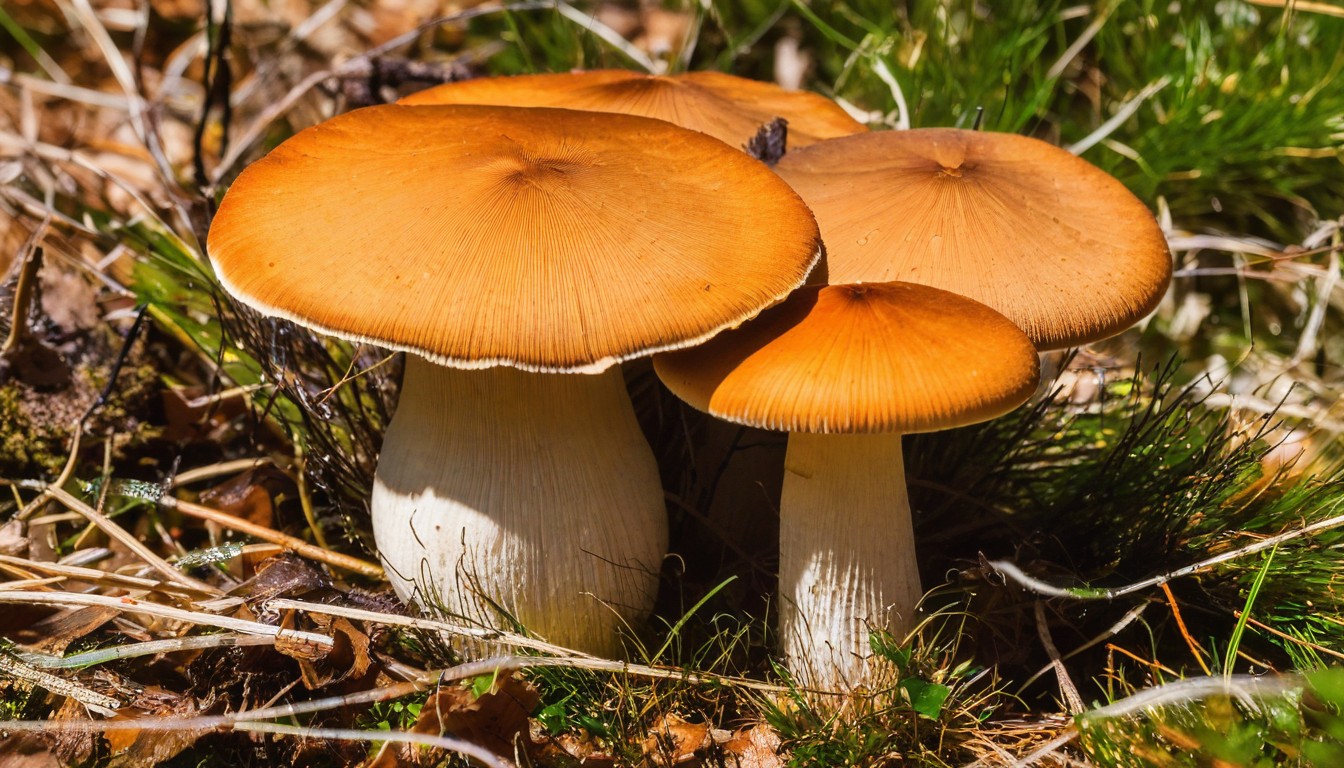
Mushrooms are an essential component of ecosystems, playing a crucial role as decomposers. As they break down dead organic matter into useful nutrients, they contribute to the balance and health of Virginia’s ecosystems. Additionally, mushrooms interact with other organisms, including plants, insects, and animals, and form intricate relationships that are still being studied and understood by researchers.
The intricate network of relationships between mushrooms and other organisms highlights the importance of preserving ecosystems. By protecting habitats, we can help ensure the survival of mushroom species and the diverse communities they support.
Mushroom Ecology
Mushrooms occupy a range of niches within ecosystems, from the decomposer fungi found on the forest floor to the mycorrhizal fungi that form symbiotic relationships with plant roots. Mycorrhizal fungi play an essential role in nutrient cycling and plant growth, making them a critical component of many ecosystems. Others, such as parasitic fungi, can have a detrimental impact on plants and animals.
Understanding the ecological roles of mushrooms is crucial for conserving ecosystems and their inhabitants. By studying mushroom ecology, researchers can gain insights into the complex interactions that shape ecosystems, and how human activities can impact these delicate balances.
Virginia Fungi
Virginia is home to a diverse array of fungi species, each with its unique ecological role. The state’s forests, wetlands, and grasslands support a range of mushroom species, from the cosmopolitan shiitake to the regionally endemic Virginia pine agaric. Some of these fungi have strictly local distributions, making them important conservation targets.
Researchers are studying the distribution, abundance, and ecology of Virginia fungi to help inform conservation efforts and protect these essential components of the state’s ecosystems.
|
Mushroom Ecology |
Virginia Fungi |
|---|---|
|
Decomposer fungi contribute to nutrient cycling and soil health |
The Virginia pine agaric is a regionally endemic species found in the state’s montane forests |
|
Mycorrhizal fungi form symbiotic relationships with plant roots, enhancing plant growth |
The cosmopolitan shiitake is cultivated for its culinary and medicinal uses in Virginia |
|
Parasitic fungi can harm animals and plants, disrupting ecosystems |
The eastern milkcap is a common woodland mushroom found throughout Virginia |
As highlighted in the table above, Virginia’s fungi serve vital ecological roles and offer numerous benefits, such as culinary and medicinal uses. By preserving and protecting these diverse mushroom species, we can ensure the health and productivity of our ecosystems for generations to come.
Cultivating Mushrooms in Virginia
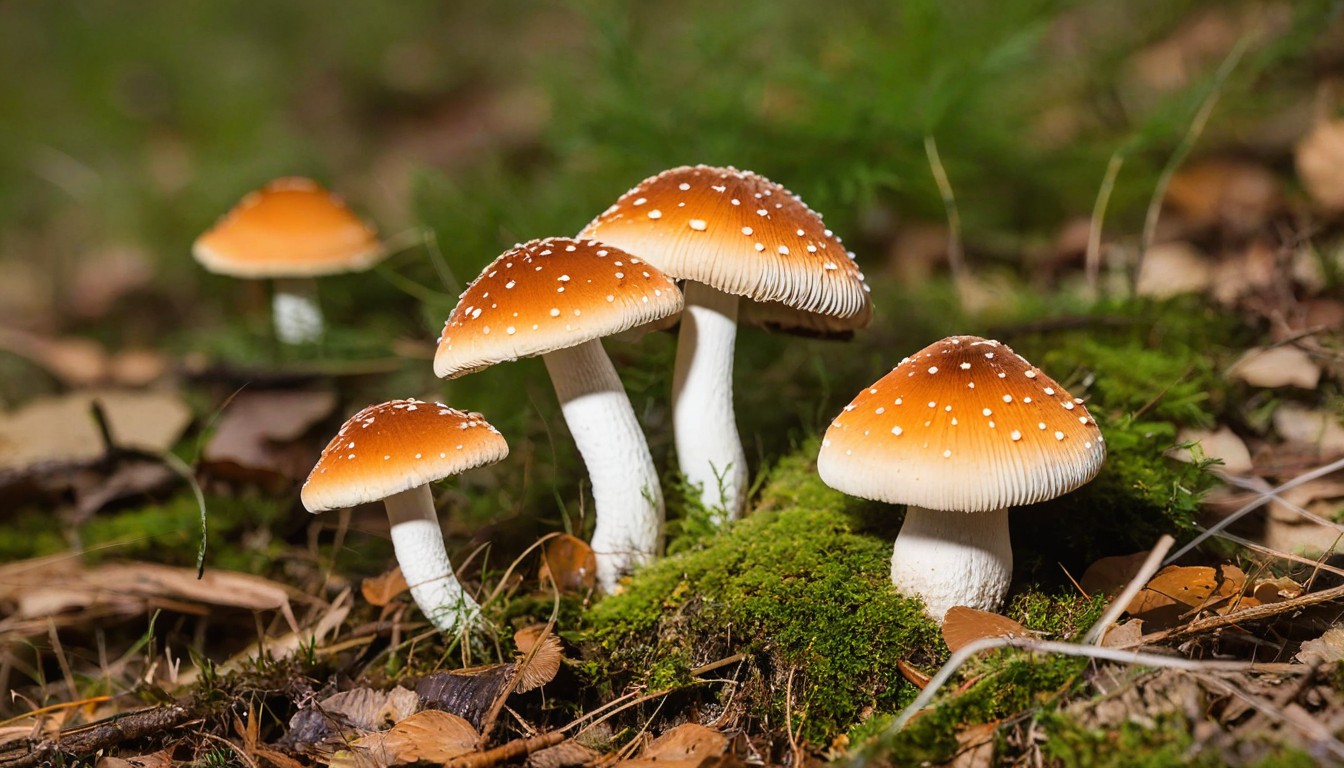
While foraging for mushrooms can be an exciting and rewarding activity, growing your own mushrooms in a controlled environment can also be a fun and educational experience. With a little knowledge and effort, anyone can become a successful mushroom cultivator in Virginia.
Techniques of Mushroom Cultivation
There are several methods of mushroom cultivation, including growing mushrooms from spores or by using a spawn (a starter culture). The most common techniques for growing mushrooms at home involve using mushroom kits or creating your own growing environment using substrates (such as straw, sawdust, or compost).
Suitable Species for Cultivation in Virginia
Several species of mushrooms are suitable for cultivation in the Virginia climate, including shiitake, oyster, and lion’s mane mushrooms. These species are easy to grow and offer a delicious addition to any meal.
Tips for Successful Mushroom Growing
- Keep your growing environment clean and free of contaminants.
- Choose a suitable substrate for your chosen mushroom species.
- Monitor temperature and humidity levels regularly.
- Follow specific cultivation instructions for your chosen species.
Tip: Join a local mushroom cultivation group or attend a mushroom cultivation workshop to learn more about the best methods for growing specific mushroom species in Virginia.
Rare and Endangered Mushroom Species in Virginia
Virginia is home to a variety of rare and endangered mushroom species that need protection to maintain their existence. Due to habitat loss, climate change, and other factors, many of these mushrooms are facing significant challenges that threaten their survival.
One of the rarest mushrooms in Virginia is the Chickamauga Craterellus, a species of chanterelle that only grows in a small region of Appalachian forests. The mushroom’s habitat is at risk due to logging and commercial development, and the species is currently listed as endangered by the state.
Another rare mushroom in Virginia is the Eastern Prairie Fringed Orchid, a parasitic species that grows on the roots of prairie plants. The mushroom is threatened due to habitat loss and is classified as endangered by the state and federally listed as threatened.
Efforts are being made to conserve and protect these valuable fungi from going extinct. Organizations such as the Virginia Native Plant Society and The Nature Conservancy are working to preserve the habitats of endangered mushrooms, while also educating the public on their importance to the ecosystem.
|
Rare Mushrooms |
Status |
|---|---|
|
Chickamauga Craterellus |
Endangered |
|
Eastern Prairie Fringed Orchid |
Endangered (state) / Threatened (federal) |
It’s important to remember that all mushrooms play a vital role in the ecosystem, and the loss of any one species can have significant consequences. By raising awareness and taking actions to protect endangered mushrooms, we can preserve the biodiversity of Virginia’s unique fungi and ensure their survival for generations to come.
Conclusion
Exploring the world of common mushrooms found in Virginia can be a fascinating and rewarding experience. By learning about their unique characteristics, identification techniques, culinary and medicinal uses, ecological importance, and conservation efforts, you can gain a deeper appreciation for these wonderful fungi.
Whether you enjoy hunting for mushrooms in the wild, growing them in your backyard, or simply learning about them from the comfort of your home, Virginia has much to offer. So why not start your journey today and immerse yourself in the wonders of Virginia’s mushroom kingdom?
FAQ
What is this guide about?
This guide is all about common mushrooms found in Virginia. It provides information on identification, edibility, toxicity, medicinal properties, cultivation, and conservation of mushrooms in the state.
Why should I be interested in mushrooms?
Mushrooms are fascinating organisms that play important roles in ecosystems and have culinary and medicinal uses. Learning about mushrooms can enhance your understanding of nature and provide opportunities for foraging, cooking, and exploring.
How can I identify mushrooms?
Mushroom identification involves looking at various features, such as the shape, color, texture, gills, and spore print. This guide will provide you with key characteristics and tips to help you identify different mushroom species.
Are all mushrooms in Virginia edible?
No, not all mushrooms in Virginia are edible. Some mushrooms can be highly toxic or even deadly. It’s essential to accurately identify mushrooms before consuming them and to only forage edible species from reliable sources.
Can mushrooms have medicinal properties?
Yes, many mushrooms have been used for centuries in traditional medicine and are believed to have various health benefits. Medicinal mushrooms found in Virginia can boost the immune system, support overall wellness, and possess other healing properties.
Can I cultivate mushrooms at home in Virginia?
Yes, you can cultivate mushrooms at home in Virginia. There are several species suitable for cultivation, and this guide will provide you with basic techniques and tips to get started with successful mushroom cultivation.
Are there rare and endangered mushroom species in Virginia?
Yes, some mushroom species in Virginia are considered rare or endangered due to habitat loss and other factors. Efforts are being made to conserve and protect these valuable fungi to ensure their survival for future generations.

